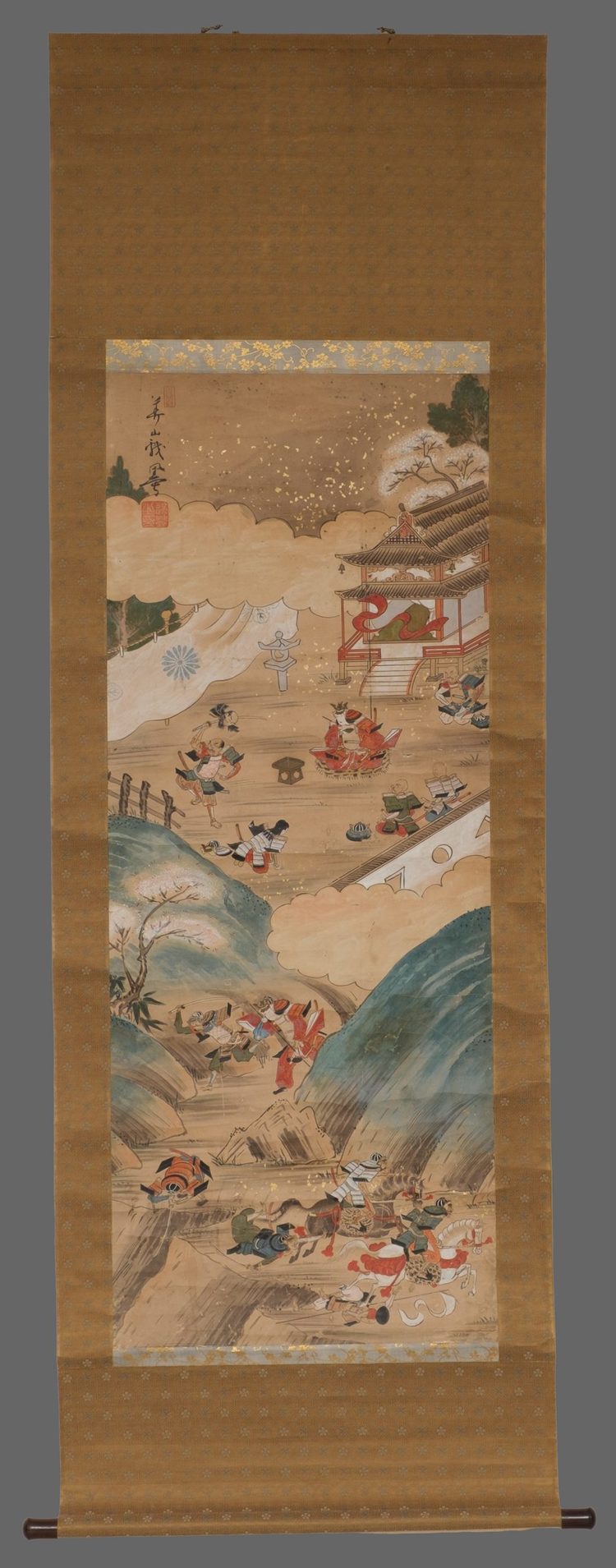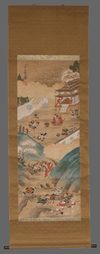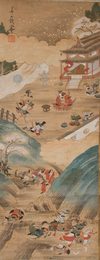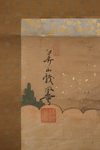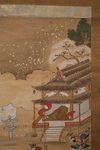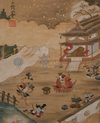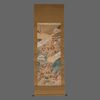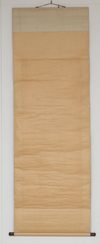Lot 45 KAKEJIKU 掛け軸 (HANGING SCROLL) BY WATANABE KAZAN 渡辺崋山 (1793–1841)
A kakejiku 掛け軸 (hanging scroll) by Watanabe Kazan 渡辺崋山 (1793–1841), featuring two vivid narrative scenes depicting a high-ranking samurai—possibly a commander or even a daimyō 大名.
In the upper scene, a kubi jitten 首実検 (head-viewing ceremony) is taking place. The commanding samurai sits calmly at the centre of his encampment, clad in full armour and enjoying a cup of sake, surrounded by retainers. A severed enemy head is ceremonially presented to him, displayed on a sword.
The lower scene portrays the same noble figure, now in pursuit of a group of fleeing enemies or rogue samurai. Accompanied by a retainer, he chases down the culprits, who are escaping on foot stumbling, but also on the two horses they stole.
Signed and sealed in the lower left corner:
Signature: Kazan shosha 崋山[…][…]
Seal: Henchô no in 邊登之印 (“Seal of Henchô”)
Watanabe Kazan 渡辺崋山 (1793–1841) was a renowned painter, scholar, and political thinker of the late Edo period. Born in the Tahara Domain, he served as a samurai retainer while pursuing art and Confucian studies. Influenced by Western realism and Chinese literati painting, Kazan created striking portraits and landscapes. He was also a leading advocate of Rangaku (Dutch Learning), promoting limited engagement with Western knowledge. His progressive views led to his arrest during the Bansha no goku (1839). Under house arrest, he eventually died by suicide. Kazan remains a symbol of reformist thought and artistic innovation in Japan.
Period: Japan – Late Edo period (early to mid-19th century)
Medium: Hand-painted colour and ink on mulberry paper with some square gold leaf specks
Mounting: Golden and brown brocade silk, with jikusaki 軸先 (roller ends) made of brown wood
Complete with attributive wooden tomobako 供箱 (storage box)
Dimensions:
Width: 72.5 cm, Height: approx. 190 cm, Jikusaki diameter: 2.9 cm
Considering its age in a good condition considering its age with some expected signs of wear such as discolouration and creasing. Small tear lower right corner. Please refer to the photos for a clear condition reference.
